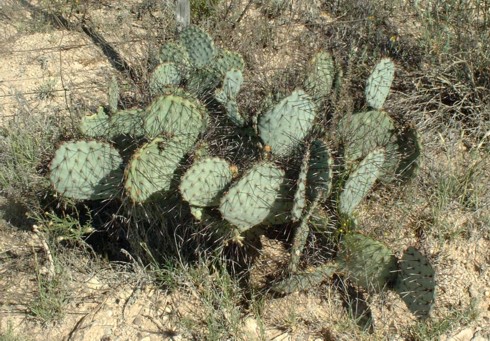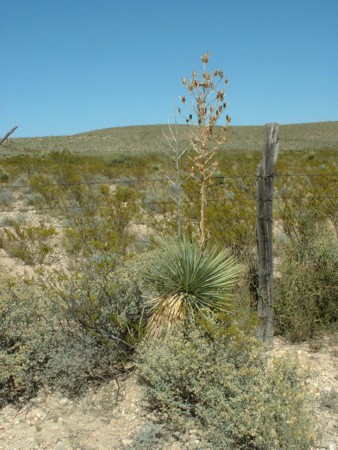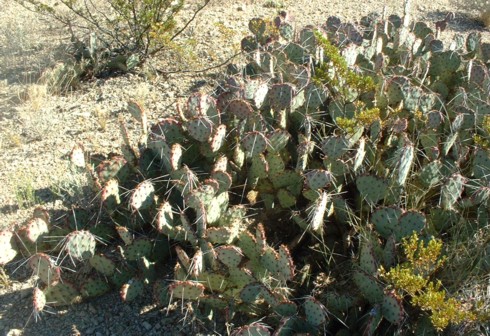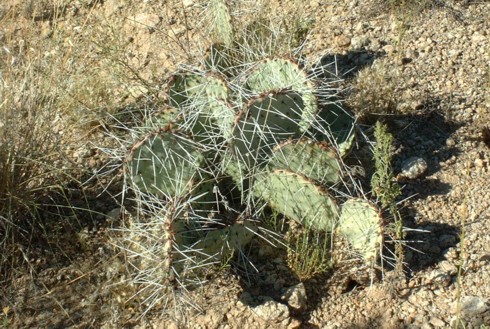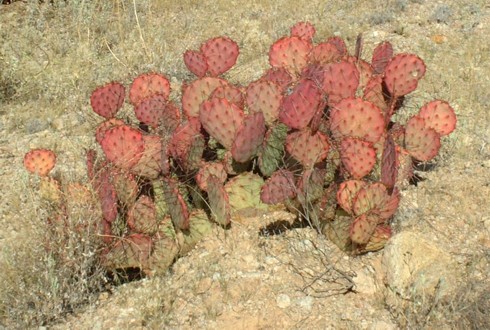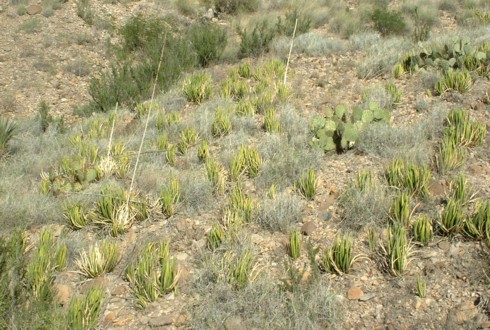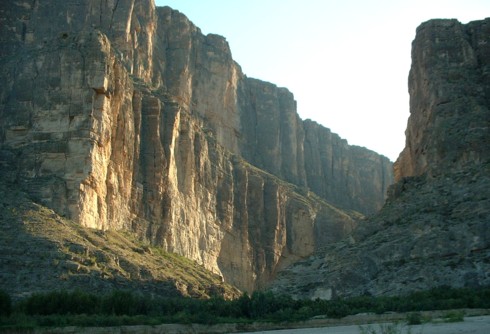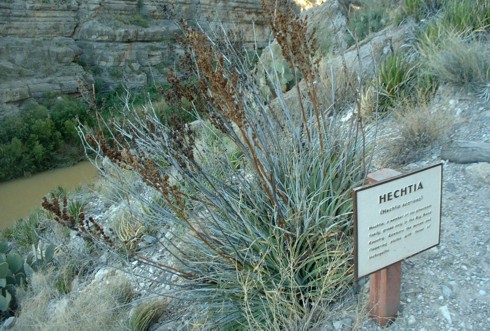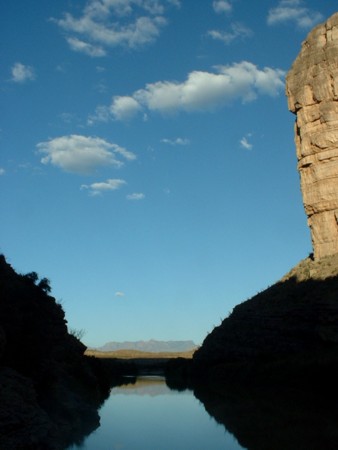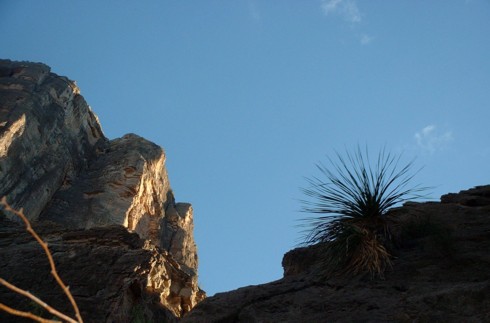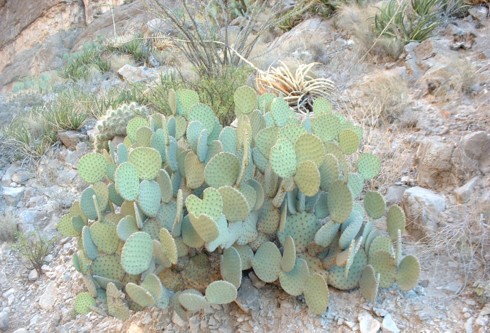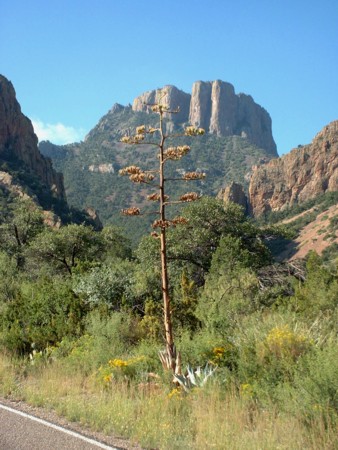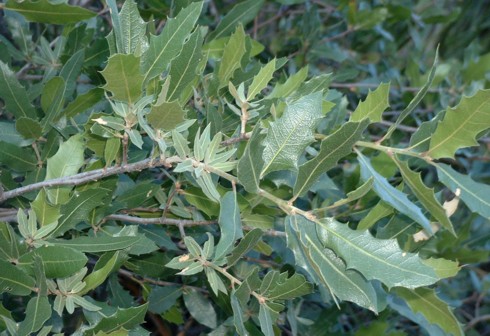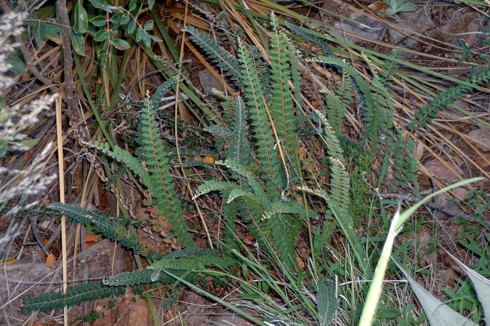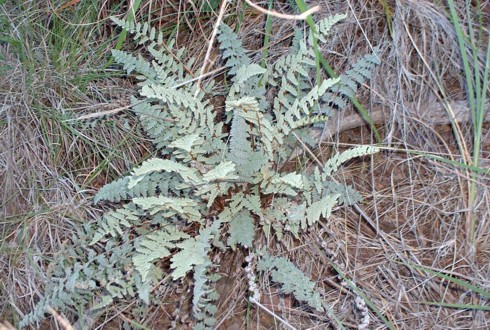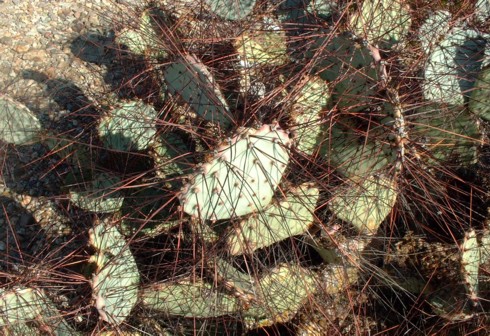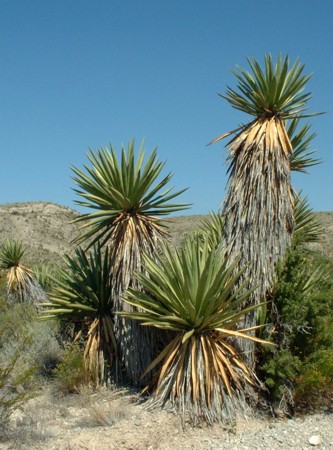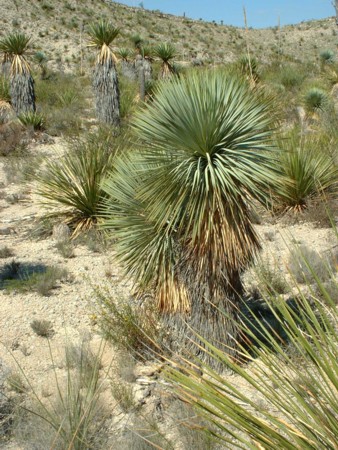|
Page 9 - Texas II
Heading south from Alpine, the cacti became increasingly interesting. I would have taken this for Opuntia macrocentra, but I now know it must actually be O. azurea var. prava.
This Yucca north of big bend looks like a bit smaller version of Y. rostrata. So I suppose it is Y. thompsoniana.
I'm still not quite sure what to call this.
....or this white-spined beauty! I expect the pads of all these cacti to turn a nice shade of purple in winter.
A psychadelic purple cactus! Totally trippy, dude! This is O. azurea var. diplopurpurea. It was down at a pretty low elevation just north of the west entrance to the park, so it might not be very cold hardy. Big Bend National Park itself was fabulous, of course. Sadly I only got to spend less than a day in a place I could easily explore for many weeks. I was surprised at how big the mountains were (to 7,825'), and what a variety of ecological habitats the huge change in altitude created.
Agave lechuguilla in Big Bend National Park. This is its usual habit in the areas that it is native.
I reached the oft-pictured Santa Elena canyon at Castolon just at the right time of the day! The Rio Grande flows out of this canyon; on the left side is Mexico.
Opuntia rufida in front of the canyon wall. It is called "blind prickly pear", not like all the other species that are contstantly watching you.
My vast botanical knowledge tells me this must be a Hechtia. It's a good thing I took those plant identification courses in college!
This is just a cool picture. It's funny, I never know which pictures will turn out the best when I take them.
Another good picture. Dasylirions of some kind grow all the way to the bottom of the Rio Grande canyon.
Opuntia rufida is pretty cool, I thought. It looks like it's not spiny, but it's covered in glochids!
The next morning I explored the Chisos Mountains, home of Agave havardiana and many interesting oaks, cacti and ferns.
A nice oak in the Chisos Mountains. Oak expert David Richardson thinks it might be a hybrid of Q. graciliformis and Q. emoryi.
The Chisos Mountains also have a lot of interesting ferns. This is Chelianthes bonariensis.
Pellaea atropurpurea. I saw this species (or something very much like it) near Young, Arizona as well.
And here is Chelianthes eatonii. It's amazing what grows with the increased moisture and cool temperatures that altitude provide.
There were numerous cacti here, but I didn't have time to look closely at a lot of them. This is another Echinocereus, but I'm not sure which.
WOW! Monster sized Agave havardiana! These whoppers in the Chisos Basin had rosettes to 5' (occasionally 6') across, with amazingly fat leaves. I had no idea this species got so big. Being in a national park, I refrained from collecting any seeds.
A form of Opuntia azurea var. prava covered in 5" long, black spines, in the southeast part of the park.
The rare Opuntia spinosibacca, endemic to lower elevations on the east side of the park.
Yucca carnerosana at Dagger Flats, on the east side of Big Bend Park.
This was quite a surreal place: hundreds of Yucca carnerosana, all bereft of seed. Apparently I visited them on a non-flowering year.
Dagger Flats is also home to Y. rostrata, though they are much fewer than Y. carnerosana.
I saw this nice blue form of Y. torreyi in quite a few areas in and just outside the park. I should have tried harder to find seeds on this. |
